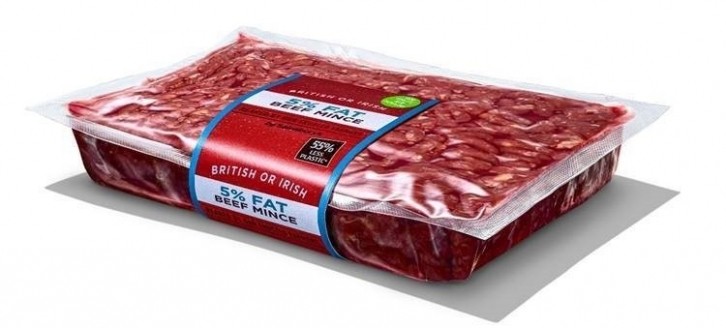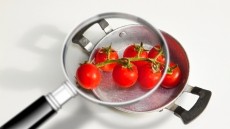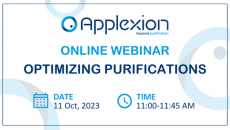Unwrapping the recyclability problem: From food packaging materials to consumer responsibility

Of the 141m tonnes of plastic food and beverage packaging produced annually, just 14% is recycled, according to the Ellen MacArthur Foundation.
The problem lies in overconsumption, says Adam Herriott, senior specialist at WRAP – a British NGO advocating for change in the way packaging is produced and disposed of. When a vast number of products consumed are wrapped in single-use packaging, it’s all too easy to throw it in the bin without thinking about its next stage of its life.
“It might be that packaging is recyclable and we’re not doing it properly, or we are recycling it properly, but the packaging itself isn’t easily recycled,” he explained. “It can be very difficult to separate [different types of polymers] from each other to be able to recycle something new.”
But if governments, industry, and consumers take responsibility, recycling can be improved and plastic pollution eliminated, suggests WRAP.
Taking a regulatory approach to the plastic problem
In the UK, change is afoot across the plastics regulatory landscape. On 1 October of this year the UK will ban most types of single-use plastics – including those that are compostable, biodegradable or recycled – used for bowls, plates or trays. Single-use plastic cutlery and balloon sticks will also be banned.
While single-use beverage bottles are not affected by the ban, they are implicated in the Plastic Packaging Tax which came into force last year. It applies at a rate of around £211 (€246) per tonne of plastic packaging with less than 30% recycled plastic. The idea is to help increase recycled content packaging, drive demand for materials to be collected, and make sure that these materials can continue to be recycled, explained Herriott.
Extended producer responsibility (EPR) has also been tabled in the UK, but packaging fees have been deferred until 2024. EPR puts the onus on packaging importers and suppliers to pay for the collection, disposal, and recycling of their materials. This should encourage brands and retailers to produce packaging that is as recyclable as possible, we were told.
The UK government has also set national recycling rates to hit in the coming years. By 2025, at least 55% of municipal waste must be recycled, with the target increasing to 65% by 2035. But what is missing here, according to Herriott, is consistency. Recyclability is inherently linked to recycling infrastructure which can significantly vary, council to council.
“Where I live, we have one big bin where all our recycling goes into, and then it goes to another city to get sorted into different materials. And where other people live, they’ve got lots of different boxes and put plastic in one, cans and tins in another, their glass in another, and paper in another…They might be able to recycle more, and they don’t have to go through additional processes to sort,” explained the senior specialist.
“There are lots of different things happening, and they all need to come together to work coherently.”
Sharing responsibility amongst suppliers, brands and consumers
As to whether food and beverage manufacturers are taking enough responsibility to counter the plastic problem, Herriott believes ‘there is always more that can be done’.
And in food, there are extra specifications that should be considered. Not only does the packaging have to be food grade, meaning it is safe for food products, but it also has to extend shelf life – which is particularly important given the environmental impact of food waste.
“Food waste far outstrips the impact that any packaging has. If food waste were a country, its greenhouse gas emissions would be the third largest in the world. It’s a massive issue.”
An obvious way brands and manufacturers can improve recyclability is by moving away from multi-layered packaging towards mono materials. Pouch packaging is a good example of this. Being traditionally made from multi-layered packaging materials – notably aluminium sandwiched between layers of plastic – impacts its recyclability. According to the On-Pack Recycling Label (OPRL), this type of packaging cannot be recycled by local councils in the UK due to lack of resources, infrastructure and/or technology do deal with this type of material.
One solution is to switch to a mono-material pouch made from polypropylene, including the spout and cap. Last year, baby food brand Little Freddie’s became the first to make this switch in the UK.
Mono-materials are a lot easier to recycle, explained Herriott. “You haven’t got to separate everything out. There are lots of things we could be doing to make packaging more efficient as well.”

As to the responsibility of the end-user, well, the ‘buck stops’ with consumers, explained the senior specialist. Even if brands and retailers ensure all their packaging is 100% recyclable, the end goal will not be achieved if the consumer does not dispose of it into the correct bin. “It’s really important that consumers are doing their part.”
At the same time, there is ‘obvious’ confusion surrounding what can and can’t be recycled, and differences in local authority recycling capabilities can add to that. Local authorities can educate their residents on what to recycle and which bins to use. That can help give consumers transparency as well as confidence that what they’re putting in their recycling bin is actually being recycled.
The OPRL label also goes a long way in helping to encourage recycling, and Herriott believes consumers are getting to know the green and black labels (green for recyclable, black for non-recyclable) well.
The F&B packaging innovations encouraging greater recyclability
Innovation in food and beverage packaging can help in many ways, from reducing virgin plastic use to encouraging greater recyclability. And some of the most exciting innovations in Herriott’s opinion are actually amongst the most simple.
Some retailers have started to remove the pigment from their own-brand milk bottles, for example. Instead of the classic green, red or blue pigments, the new tops are now made of clear plastic. Supermarkets Sainsbury’s, Aldi, Waitrose, and Lidl are amongst the retailers to have made the switch to clear caps.
Both clear and coloured lids are made from high-density polyethylene (HDPE), but only clear lids can be recycled back into food-grade packaging.
Coca-Cola’s Sprite is another example of a product undergoing a colour change. The iconic green plastic bottles have been switched to clear plastic, making them easier to recycle into new bottles locally.
Other innovations of note include swapping plastic trays used in meat packaging for cardboard alternatives. Earlier this year, Sainsbury’s replaced the plastic packaging on its ‘by Sainsbury’s’ steak range, resulting in the removal of 70% plastic per tray. The retailer expects the move to remove 10m pieces of plastic, and 249 tonnes, per year.
Sainsbury’s also made the decision to save on plastic by swapping traditional, plastic tray packaging for a new vacuum-packed alternative across its mince range. Being more lightweight means taking carbon emissions off the road, while still protecting the meat, explained Herriott.

But although Sainsbury’s expects its new vacuum-packed packaging to save 450m tonnes of plastic annually, its rollout raised questions – suggesting not all innovations hit across the board. At the time, Sian Sutherland, co-founder of campaign group A Plastic Planet, said that while there is a saving in the weight of plastic used, switching to flexible plastics over rigid ones is ‘no more green than changing from a petrol to a diesel vehicle’.
“Flexible plastics are almost impossible to recycle, especially where they are food contaminated. The old, rigid plastic packaging would at least have gone into recycling, however limited the UK’s systems are.”
Herriott acknowledged that some packaging ‘tweaks’ benefit some areas, but may not in others. “But there’s generally a good news story all the same.”
You can listen to FoodNavigator’s interview with Adam Herriott, senior specialist at WRAP, on The FoodNavigator Podcast here, or wherever you access your podcasts.















